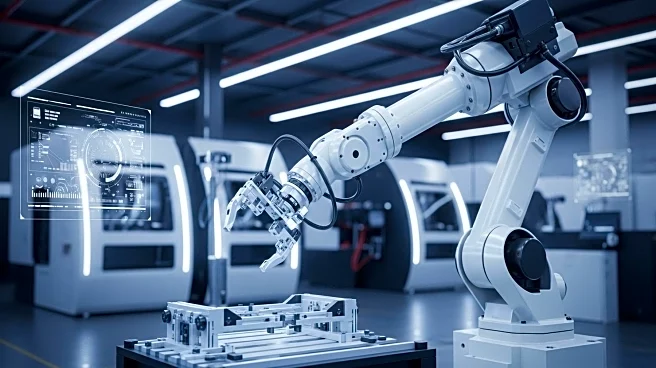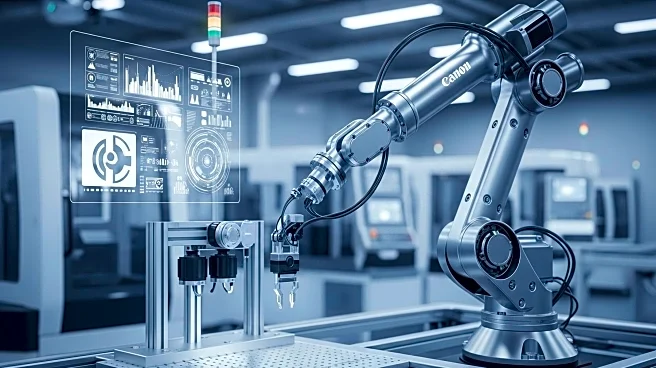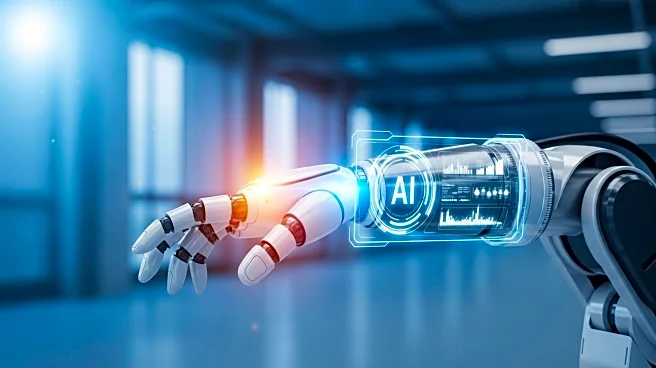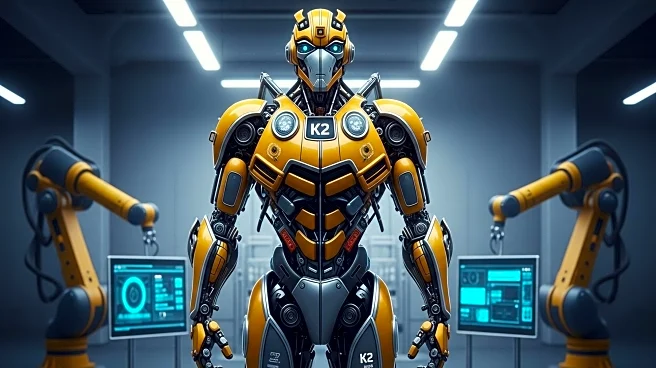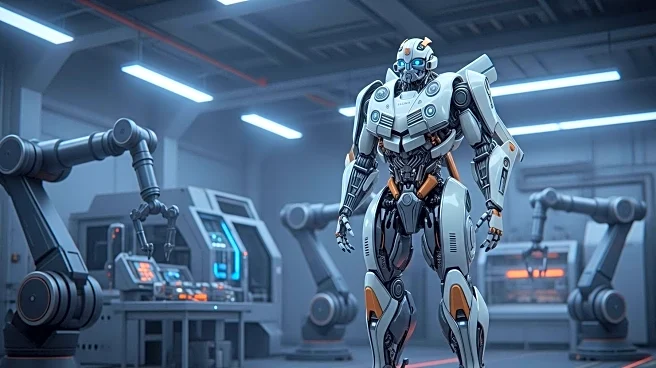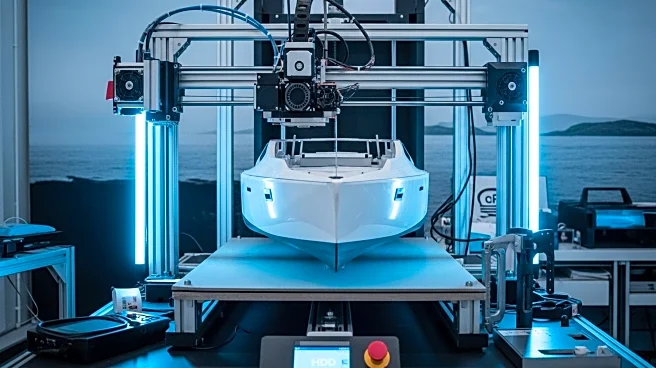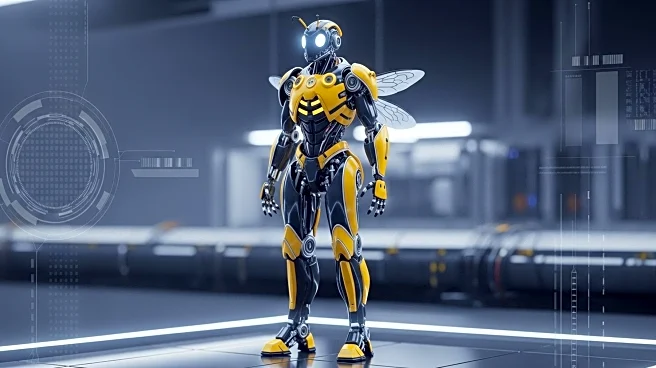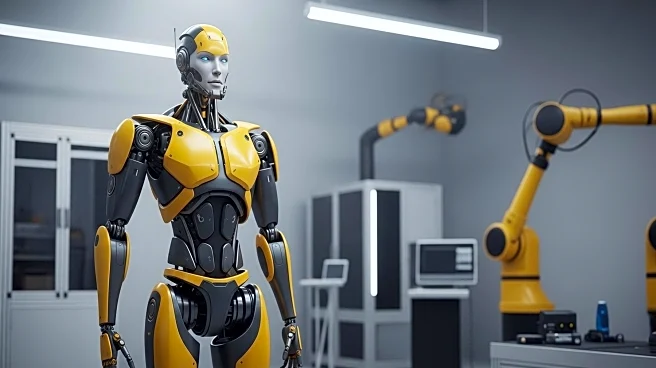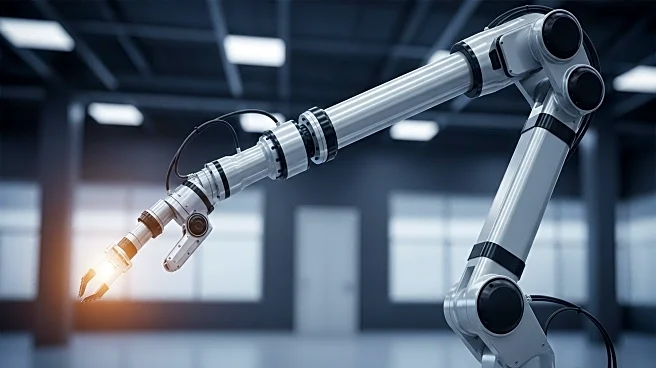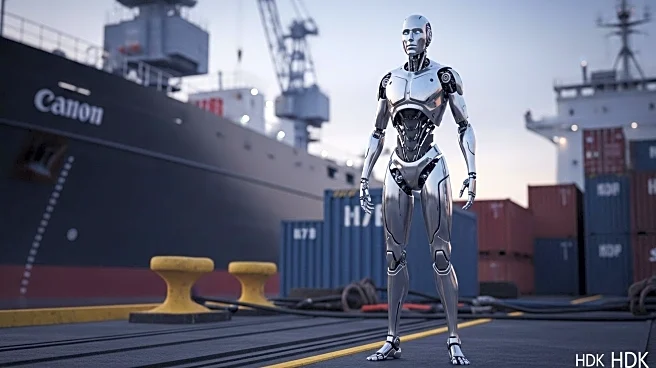What's Happening?
The manufacturing industry is increasingly relying on SCARA (Selective Compliance Articulated Robot Arm) robots to address labor shortages and enhance operational efficiency. As the industry faces a significant labor shortfall, estimated to cost $1 trillion in revenue, SCARA robots offer a solution by providing flexibility and adaptability in digital manufacturing processes. These robots are designed for high-speed, repetitive tasks and incorporate advanced technologies such as artificial intelligence and big data analytics. This allows manufacturers to maintain efficiency and meet evolving customer expectations despite workforce challenges.
Why It's Important?
The integration of SCARA robots in manufacturing is crucial as the industry grapples with a projected need for 3.8 million new workers by 2033, with half of these positions potentially remaining unfilled. The flexibility offered by SCARA robots helps mitigate the impact of labor shortages, reducing operational costs and improving productivity. This technological advancement is essential for manufacturers to remain competitive and meet the demands of a rapidly changing market. Smaller manufacturers, in particular, benefit from these robots as they face higher operational costs and challenges in hiring skilled labor.
What's Next?
The demand for SCARA robots is expected to grow, with the global market projected to reach $15.6 billion by 2032. Manufacturers are likely to continue investing in these technologies to enhance production efficiency and quality control. As customer expectations evolve, companies may face pressure to adopt cutting-edge robotics to maintain competitiveness. Decision-makers will need to conduct cost-benefit analyses to determine the best time to invest in these technologies, balancing the need for modernization with financial constraints.
Beyond the Headlines
The adoption of SCARA robots represents a broader shift towards automation and digitalization in manufacturing. This trend raises questions about the future of the workforce and the role of human labor in increasingly automated environments. Ethical considerations regarding job displacement and the need for reskilling workers are likely to become more prominent as automation technologies advance. Additionally, the reliance on robotics may influence regulatory policies and industry standards related to safety and efficiency.

